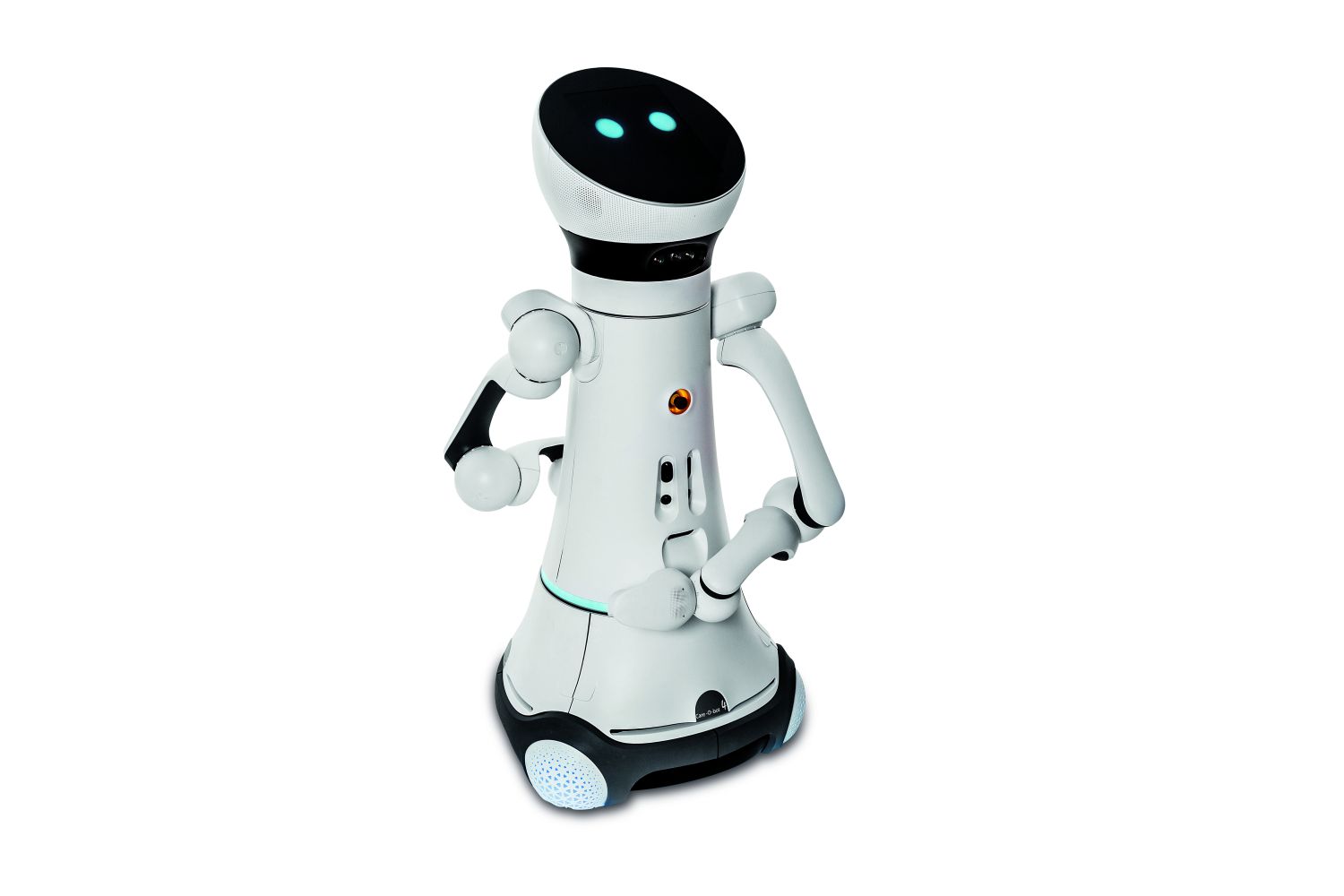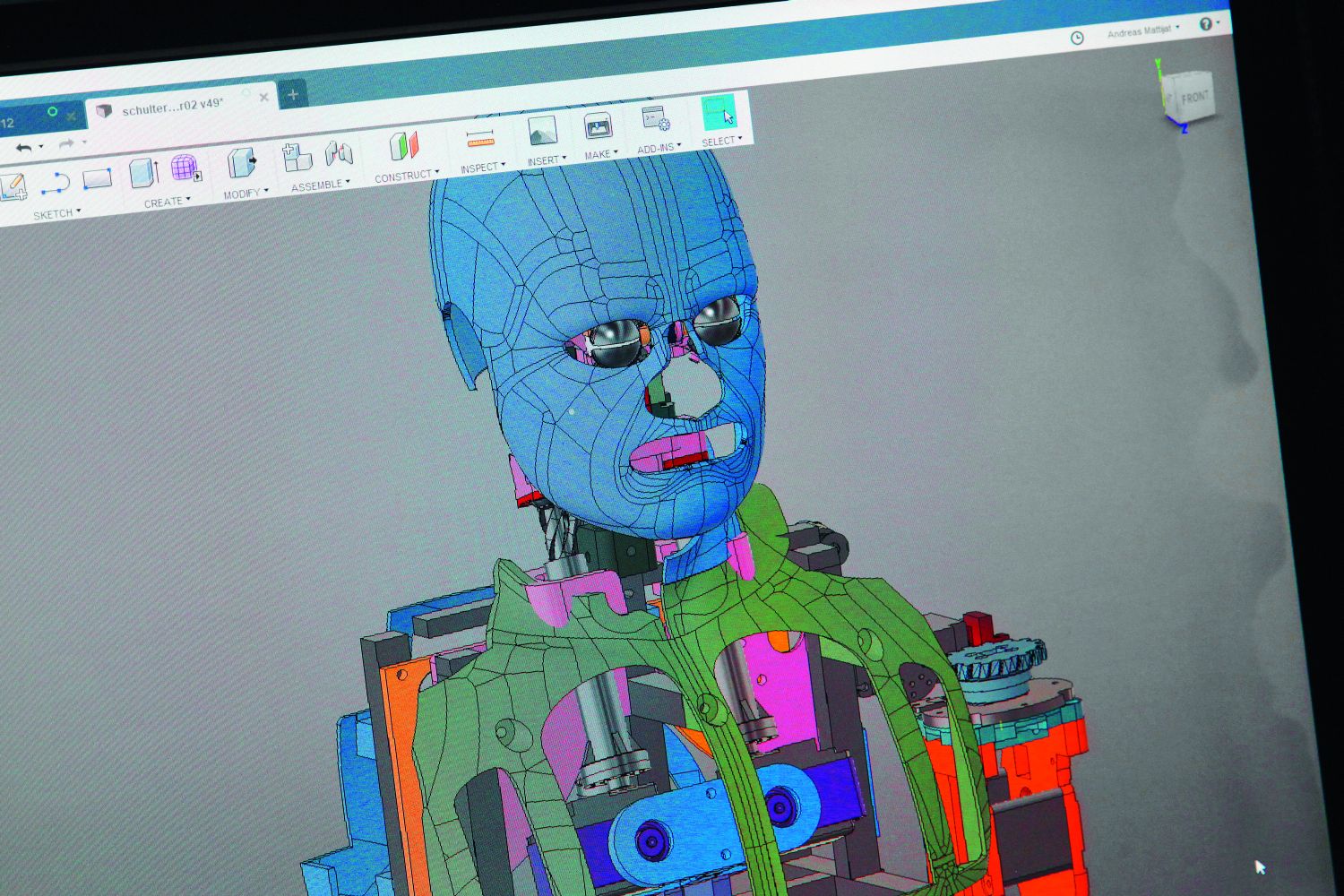Human or Machine?
Author: Martin Schmitz-Kuhl
Humanoid robots, or machines in human form, are certainly fascinating. But do they have a future in a smart world?
Data from Star Trek. The Terminator. The Replicants in Blade Runner. Human actors playing the parts of robots have been a staple of science-fiction cinema for years, dating as far back as Brigitte Helm as the Machine Man in 1927’s ‘Metropolis.’ However, it took until October 2017 that the role-reversal – a robot playing a human – premiered at the Munich Kammerspiele theater. The show is now touring the stages of Europe. The human in question is Author Thomas Melle, who concocted the theater production “Uncanny Valley” together with Berlin-based Director Stefan Kaegi. The robot that takes the stage in this one-‘man’ show could be the real-life Melle’s identical twin. Of course, his facial expressions are rather rigid, his gestures somewhat lifeless. And then there is the fact that the back of his head is deliberately left open, so as to show the audience the electronic workings. “Despite this, we are still accosted by audience members that remain convinced it is a real person from beginning to end,” reports Director Kaegi. This was a surprise even to him.
The name of the production is no accident. Back in 1970, Japanese scientist Masahiro Mori determined that we humans perceive humanoid robots more positively, the more human they appear. However, this only applies up to a certain point. After this, we begin to become more aware of the robot’s deficits – for example in its motion or linguistic abilities – and judge them against real human standards. As a result, acceptance gradually diminishes. Only once the robot can hardly be distinguished from a human does acceptance begin increasing again. This gap in acceptance is referred to as the ‘Uncanny Valley.’
This is necessary knowledge in order to understand the design of robots such as Pepper. Some DEKRA customers may recognize it from the DEKRA Awards 2017 ceremony, where it appeared on stage. In order to avoid having Pepper fall into the Uncanny Valley, its designers deliberately selected a less humanoid design, focusing more on cuteness with a round head, saucer eyes and a higher, child-like voice. Pepper, just like its younger sibling Nao, is increasingly being employed as an informative and communicative companion robot across businesses and institutions. A Sparkasse bank branch in Bremen-Neustadt, the Frankfurt City Library, the Munich Town Hall – all of them want to have this ‘service fairy,’ which chats with customers and can answer their questions. It is just a matter of time before such companion robots are found in private households. Even today, ‘social talkers’ for home usage – such as the 28-centimeter, 1,200-euro Sota – can be found in the electronics departments of many department stores. To date, however, this is mainly just the case in Japan – a country well-known for having less aversion to interacting with robots.
Care-O-bot will offer physical assistance
While the motor skills of such companion robots are very limited – predominantly limited to waggling their arms and nodding or shaking their heads – service robots such as the Care-O-bot are already capable of far more. This has been in development since the 1990s at the Fraunhofer Institute for Manufacturing Engineering and Automation, and is now distributed by a spin-off company named Unity Robotics. “With the help of its sensors, the Care-O-bot will be able to assess complex situations and offer concrete physical assistance based on these assessments,” promises Managing Director Dr. Ulrich Reiser. “In doing so, the robot should be able to assist dwindling specialist personnel in hospitals and care homes by performing simple tasks, as well as in stores, at rail stations or in airports.”
The Fraunhofer Institute is not alone in its endeavors. Research laboratories across the world are working hard to lend humanoid robots the fine motor skills of true Homo sapiens. It started with Honda’s Asimo, revealed to the public in 2000. Its walking abilities were so revolutionary at the time that it became the first of its kind to be admitted to the Robot Hall of Fame in 2004. In the intervening years, however, it has long been outstripped by others, such as Atlas from American robotics company Boston Dynamics. This humanoid robot can not only walk in an almost human fashion, but also conquer any obstacle course with aplomb, finishing with the flourish of a backward somersault. It appears to be but a matter of time before such robots master and gradually take over all those physical activities that have previously been reserved for humans.


Robots take on complex tasks
But why? Or phrased differently, is the image of humanesque metal buddies that do all our tasks for us not just science fiction? Not because it wouldn’t be technically possible, but because technical development has long followed a markedly different path. Because tomorrow’s world will be smart, and our daily lives characterized by the Internet of Things. This simply means that when a car drives autonomously, it does not need a robot to sit in the driver’s seat. And when a vacuuming robot cleans the house, and a lawn-mowing robot sorts the yard, it is no longer necessary for a humanoid robot to reach for the vacuum cleaner or the lawn mower.
One would be forgiven for suspecting that these attempts to create evermore humanoid robots are but the whimsy of robotics specialists in laboratories, just wanting to demonstrate what is possible, without any intention of bringing them into wider usage. Dr. Fumio Kanehiro refutes this. The Japanese scientist heads the ‘Humanoid Research Group’ of the National Institute of Advanced Industrial Science and Technology, or AIST for short. His newest robot, the HRP-5P, cannot walk or perform a somersault, but can construct a drywall.
While this may sound a little less spectacular at first consideration, it is a highly complex endeavor. The robot must first take the plasterboard panel in its hand, determine the exact position on the wall before suitably affixing the board. While this could be done by most standard industry robots, they may only do so in the factory that houses them. “On construction sites or in workshops with little space, conventional robots are unsuitable, and tasks must be performed by humans,” explains Kanehiro. “Or robots with a human-like physical structure, such as our HRP-5P.”
A high-tech marionette
Similarly tight working spaces are common in private homes. As such, the prospect of humanoid robots here, acting as multifunctional and omnipotent working machines, is far from absurd. After all, they would not be limited to vacuum cleaning and mowing lawns, but may also drive the kids to school, pick up shopping on the way home, and even cook dinner later on.
And in the limelight? The robot in ‘Uncanny Valley’ is, technologically, little more than a high-tech marionette, therefore posing little competition for human actors. But as a self-learning machine, it may not be long before it can create its own material and follow the directions of the director independently. However, even Director Stefan Kaegi plays this down: “A good actor is an artist and will always be able to do more than just repeat what they have learned somewhere, or what has been said to them at some point.” At least there is one domain where we humans will be able to continue asserting ourselves.

